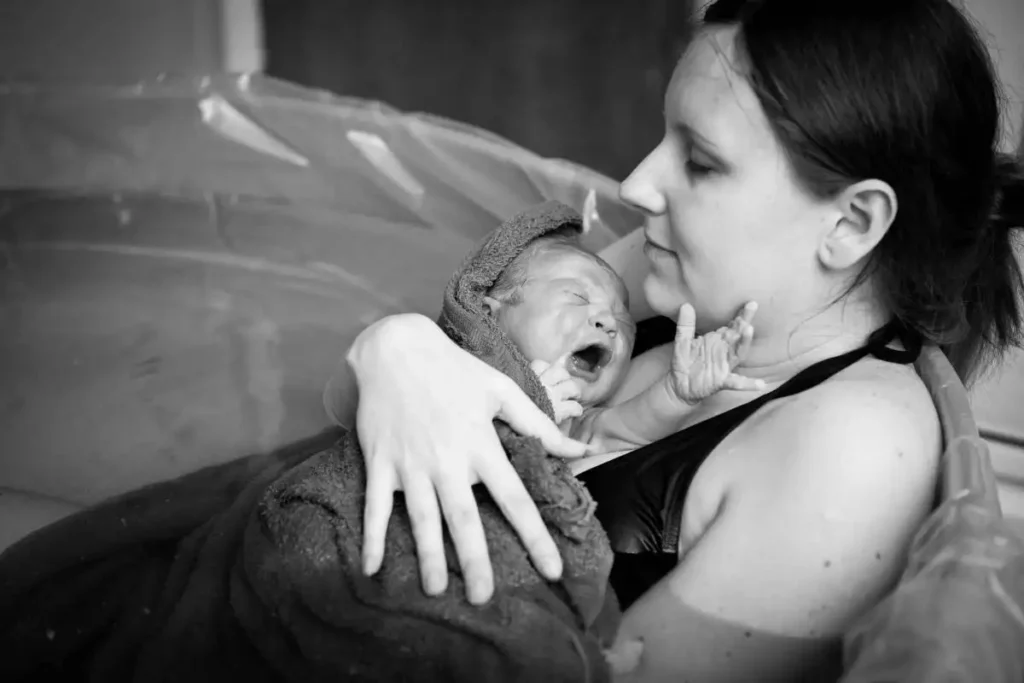While the link between birth complications and autism is not yet fully understood, researchers have suggested that the lack of oxygen during birth may cause damage to the brain, leading to developmental delays and other neurological problems. It is important to note that not all children who experience birth complications will develop autism, and not all children with autism have a history of birth complications.
Birth asphyxia occurs when a baby’s brain and other organs do not receive enough oxygen before, during, or immediately after birth. This can lead to a range of complications, including cerebral palsy, intellectual disability, and developmental delays. Recent studies have suggested that birth asphyxia may also increase the risk of autism.
One study published in ScienceDaily found that children who were exposed to complications shortly before or during birth, including birth asphyxia, were at a higher risk of developing autism. Another study published in Spectrum News found that children who had complications both before and during birth had a 44 percent increase in the risk of developing autism.
Parents concerned about their child’s development should speak with their pediatrician. Early intervention and treatment can help children with autism reach their full potential and improve their quality of life.
Oxygen Deprivation at Birth
Oxygen deprivation, also known as birth asphyxia, occurs when a baby’s brain does not receive enough oxygen before, during, or immediately after birth. This can lead to a range of complications, including brain damage, developmental delays, and even death.
Causes of Oxygen Deprivation
Several factors can cause oxygen deprivation during birth, including:
- Prolonged labor
- Placenta problems
- Umbilical cord issues
- Maternal high blood pressure
- Fetal stroke
- Infection
Effects on the Brain
When a baby’s brain is deprived of oxygen, it can cause a range of long-term effects. One of the most significant risks associated with oxygen deprivation is the development of hypoxic-ischemic encephalopathy (HIE), which can cause permanent brain damage.
Recent studies have also suggested that oxygen deprivation at birth may increase the risk of autism. According to a study of over 400,000 mother-child pairs, certain complications during pregnancy or delivery, including severe deprivation of oxygen to the baby at delivery, can increase the chances of having a child with autism by 26 percent or more [1].
While the link between oxygen deprivation and autism is not fully understood, it is clear that oxygen deprivation can have serious and long-lasting effects on a baby’s brain. If you suspect that your child may have suffered from oxygen deprivation at birth, it is important to speak with a medical professional as soon as possible.
Link Between Oxygen Deprivation and Autism
Studies have suggested that lack of oxygen at birth, also known as birth asphyxia, may increase the risk of developing autism. A study of over 400,000 mother-child pairs found that certain complications during pregnancy or delivery, including severe deprivation of oxygen to the baby at delivery, increase the chances of having a child with autism by 26 percent or more [1].
Another study found that children who were exposed to complications shortly before or during birth, including birth asphyxia, were at risk of developing autism [2].
Potential Mechanisms
The exact mechanisms by which lack of oxygen at birth may contribute to the development of autism are not yet fully understood. However, researchers have proposed several potential mechanisms. One proposed mechanism is that oxidative stress, which occurs when there is an imbalance between the production of reactive oxygen species (ROS) and the body’s ability to detoxify them, may play a role in the development of autism [3].
Another proposed mechanism is that birth asphyxia may lead to brain damage, which in turn may contribute to the development of autism [2].
Further research is needed to fully understand the link between lack of oxygen at birth and autism, as well as the potential mechanisms underlying this link. However, these findings suggest that reducing the risk of birth asphyxia and other complications during pregnancy and delivery may help to reduce the risk of autism in children.
[1] Spectrum News
[2] ScienceDaily
[3] PubMed Central
Diagnosis and Early Intervention
Diagnosing Autism Spectrum Disorder (ASD) can be challenging since there is no specific medical test to diagnose it. Instead, doctors rely on behavioral observations and developmental assessments to diagnose ASD. Early signs of ASD can be observed and diagnosed as early as 15-18 months of age, but the average age of diagnosis is about 4.5 years old [1].
However, recent studies suggest that children who were exposed to complications shortly before or during birth, such as birth asphyxia, are at risk of developing ASD [2]. Therefore, it is important to monitor infants’ health closely and take immediate action if there are any signs of complications during childbirth.
Early intervention is crucial for children with ASD, as it can improve their long-term outcomes. Early intervention programs aim to provide children with ASD with the necessary skills to improve their social, communication, and behavioral abilities. These programs can include speech therapy, occupational therapy, and behavioral therapy [1].
Parents and caregivers can also play an important role in early intervention by providing their children with a supportive and nurturing environment. They can work with healthcare professionals to develop a personalized treatment plan that meets their child’s needs.
[1] “Oxidative Stress in Autism Spectrum Disorder—Current Progress of Mechanisms and Biomarkers” (https://www.ncbi.nlm.nih.gov/pmc/articles/PMC8921264/)
[2] “Children exposed to complications at birth at risk of autism, study …” (https://www.sciencedaily.com/releases/2017/01/170131124140.htm)
Support and Resources for Affected Families
Families of children with autism caused by lack of oxygen at birth may feel overwhelmed and unsure of where to turn for support. Fortunately, there are many resources available to help.
Support Groups
Support groups can be a valuable resource for families of children with autism. These groups provide a safe and supportive environment where families can connect with others who are going through similar experiences. They can provide emotional support, practical advice, and a sense of community. Some support groups are specifically for families of children with autism caused by lack of oxygen at birth. A quick internet search can help families find local support groups.
Early Intervention Programs
Early intervention programs can help children with autism develop the skills they need to succeed. These programs are designed to help children with autism reach their full potential by providing therapy, education, and support. Early intervention programs can be expensive, but many are covered by insurance or government programs.
Legal Assistance
Families of children with autism caused by lack of oxygen at birth may be entitled to compensation for medical expenses, therapy, and other costs associated with their child’s condition. A lawyer who specializes in birth injury cases can help families understand their legal options and pursue compensation if appropriate.
Online Resources
There are many online resources available to families of children with autism caused by lack of oxygen at birth. These resources can provide information, support, and practical advice. Some popular online resources include Autism Speaks, the Autism Society, and the National Autism Association.
In conclusion, families of children with autism caused by lack of oxygen at birth do not have to face this challenge alone. There are many resources available to help them navigate this difficult journey and provide the best possible care for their child.







